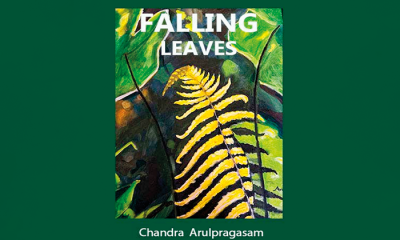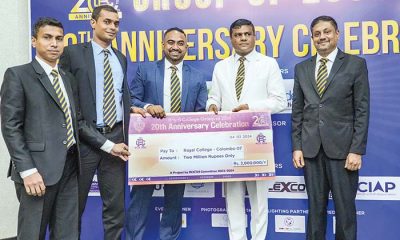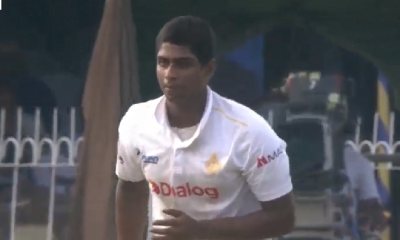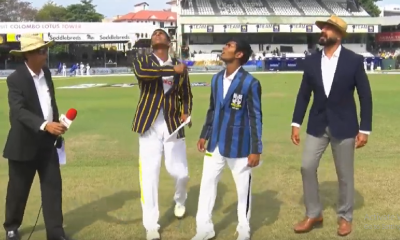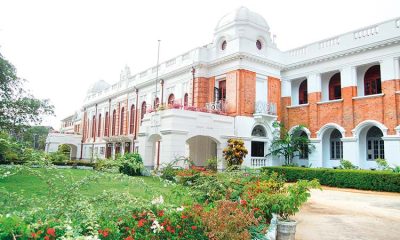Features
W.A. de Silva (1869-1942): politician, scholar, agriculturist, Buddhist leader and philanthropist
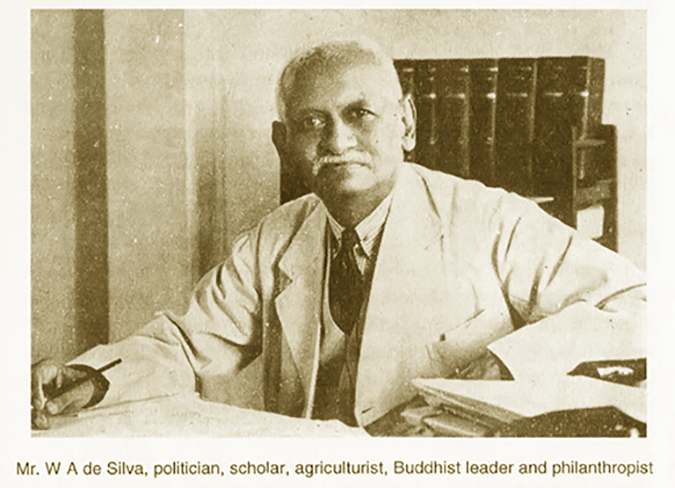
(Excerpted from Selected Journalism by HAJ Hulugalle)
To the present generation the late Mr. W A de Silva is a somewhat elusive figure in the national pantheon. Yet in his day he filled a significant role as a politician, scholar, agriculturist, trusted Buddhist leader and inveterate, almost reckless philanthropist. He died 21 years before this was written, before many of the voters of today were born, and his name is rarely mentioned even in what used to be his spacious home which is now a dormitory for parliamentarians.
It is not the fashion to praise famous men of the past, unless – by doing so we can improve our own positions or derive a political dividend. We leave it to the families of the departed to find the money for the statue or the oil painting, and to supply the annual garland to perpetuate the memory of the man or woman who has rendered signal service to the state.
Even when the golden crown of Rajasinghe II was being sliced like a fruit cake, and melted in pieces in Slave Island by cat burglars who had taken it out of the Kandy museum, there was scarcely a sigh.
Mr. W.A de Silva’s memory has recently had to compete with that of the popular novelist of similar name after whom Wellawatte High Street has been restyled. Future generations should be warned that the considerable body of exact scholarship in the leading journals contributed by W. A. de Silva, politician and man of affairs, should not be carelessly credited in the cultural ledger to the account of W.A. de Silva, the writer of romance and essays in Sinhalese which are currently in vogue.
Mr. W.A. de Silva may have been tempted to change his name for the benefit of posterity. But he was hardly the man to change his name, or his coat, usually of the finest quality of China silk, to gain the approval of posterity or the plaudits of the proletariat. His wide reading and travels made him a citizen of the world though he never ceased to be a Buddhist nationalist.
He came from the South, as many famous sons of Ceylon have done, and he was educated at Christian schools like most of our Buddhist leaders of the past. It was only at the tail end of his school career that he went to Royal College for a brief period. He thereafter joined the Bombay Veterinary College where on passing out he was offered a post in India under the distinguished bacteriologist, Dr. Alfred Lingard.
He returned to Ceylon, but the Government service could not confine him. Indeed, it soon became obvious that he was meant for other things than veterinary science, important as this branch of learning must be for the development of a country. He was in a position to please himself, for he had married a daughter of Mudaliyar Sri Chandrasekera, one of the leading businessmen of the day.
In any case W. A. de Silva was not the man to hide his talent wrapped in a napkin. He was one of the pioneer rubber planters in the heyday of the industry and as a scientific agriculturist of the same class as Sir Marcus Fernando, Sir Henry de Mel and Mr. C.E.A Dias. He planted nearly a thousand acres at Srinivasa estate, Waga, which is now the fully bud-grafted property of Mr. G.G. Ponnambalam, Q. C.
When Mr. de Silva entered on a political career he was already a rich man, broadcasting his bounty.
When I first knew him he was nearing 50 years of age. He was joint Secretary with Mr. D. R. Wijewardene, of the Ceylon Reform League, formed on May 17, 1917, six weeks after Sir Ponnambalam Arunachalam, recently retired from the Civil Service, delivered his famous address on “The Political Needs of Ceylon”. The two secretaries were men of leisure and integrity, unaffected by the winds of rhetoric amply provided by some of their colleagues, and prepared to work unobtrusively.
The meetings of the Reform League was held either at “Rippleworth”, the residence of James Peiris, or “Ponklaar”, the residence of Sir Ponnambalam. I was taken to a couple of these meetings by Mr. D.R. Wijewardene who was then my boss, to keep a note of the proceedings for the official minutes and also prepare a press release.
The men I saw there – Arunachalam, James Peiris, D.B. Jayatilaka, W.A. de Silva, F.R. Senanayake, E.J. Samarawickrama, Francis de Zoysa, E.W. Perera and Dr. C.A. Hewavitarana – were not in their first youth. None of them were alive when Ceylon gained her political independence -“sic nos non vobis mellificatis apes.” (So we the bees make honey, but not for ourselves)
Jayatilaka, W.A. de Silva, Hewavitarana and the Senanayakes had been imprisoned during the 1915 riots without a tittle of evidence to connect them with the disturbances. The iron did not enter their souls, and they redoubled their efforts to make Ceylon a happier country for those who came after them.
As a school boy I often cycled through Flower Road and was fascinated with “Sravasti” just completed, and on the other side of the road, “Srimethipaya” the residence of Mr. A.E. de Silva, the father of Sir Ernest. Alas, they are no longer the stately and well-kept homes of the elite. They seem to say, in Omar Khayam’s words, “the lions and the lizards keep the courts where Jamshid gloried”.
Mr. and Mrs. W. A. de Silva were the great political hosts of the day. “Sravasti” was a salon as Londonderry House used to be under Tory governments in England. A report of the meeting of the Ceylon National Congress held in October 1920 says: “At the adjournment of Congress, the gathering -delegates, visitors and ladies-present, accepted the invitation of Mr. and Mrs. W. A. de Silva to a garden party at their spacious residence “Sravasti”, Edinburgh Crescent, where the host and hostess, assisted by many friends and relations, dispensed hospitality and provided the several hundreds of people so favoured with a most pleasant ending to a memorable day”.
“Sravasti” also welcomed distinguished visitors to Ceylon, such as Mahatma Gandhi, Rabindranath Tagore, Jawarhalal Nehru, Srinivasa Sastri, B.G. Thilak, Bepin Chandra Pal and Sir Jagadas Chandra Bose from India and Ramsay MacDonald and Josiah Wedgewood, British parliamentarians. At “Sravasti”, Mr de Silva had the best private library in the. island. It was modelled on Sir Walter Scott’s library in Edinburgh and had a unique collection of books on Ceylon including some 1,200 ola manuscripts which he presented to the Colombo Museum.
He did not merely collect books. He read them and enjoyed them, and gave many excellent lectures which are preserved in the Journals of the Royal Asiatic Society and other publications. Like his life-long friend, D.B. Jayatilaka, he was able to find refreshment in these studies while engaged in the hurly-burly of politics. He was twice President of the Ceylon National Congress and his addresses were models of sober thinking, moderate speech and grasp of the practical problems of a changing society. They show remarkable foresight and anticipate many of the issues which engage the politicians of today.
The varied interests of Mr. and Mrs. de Silva took them to many countries and it was always a delight to talk to them about their travels. Sometimes travel was mixed with business. In 1919 Mr. de Silva was a member of the deputation which met Lord Milner, then the Secretary of State for Colonial Affairs. It was led by Mr. H.J.C. Pereira, the brilliant advocate, and included D.B. Jayatilaka, W.A. de Silva, Father Nicholas Perera O. M. I., Dr. V. Gabriel and Professor D.M. de Z. Wickremasinghe of Oxford.
D.B. Jayatilaka, writing about it to Sir Ponnambalam Arunachalam said: “The interview with Lord Milner on the 15th instant (October 1919) was a success. He was very courteous and affable and gave us it patient hearing. Mr. H.J.C. Pereira was splendid. He put the case for Reform its strongly as the most enthusiastic of us could desire. Mr. W.A. de Silva will remain in England till the end of March. I shall place him in touch with everything before I leave. I have not the slightest doubt that he will do the needful to the satisfaction of all”.
Mr. de Silva entered the Legislative Council in 1924 as a Member for the Central Province and continued there until the Legislative Council was replaced by the State Council in 1931. He then became the Member for Moratuwa and held the seat up to his death on March 31, 1942. He was Minister of Health during the six years from 1936 to 1942.
Towards the beginning of his career as Minister, Ceylon was visited by a virulent malaria epidemic. Malaria was a subject on which Mr. de Silva had much experience for he was the pioneer and probably the most successful large-scale entrepreneur in the malaria-ridden dry zone. After the first world war there was an acute shortage of rice in the island and the Government decided to give large tracts of land for paddy cultivation to joint stock companies, syndicates and individual capitalists.
The Ceylon Mills Ltd, took a lease of 5,000 acres of jungle land. European planting interests, forming themselves into a public company under the name of the Minneriya Development Company, took a lease of 9,000 acres. The Low Country Products Association leased 2,600 acres under the Kirindi Oya. All these projects folded up within a few years, defeated by malaria and lack of labour.
Mr. W. A. de Silva in 1920 took a 99-year lease of 1,169 acres under the Nachaduwa Irrigation Scheme. This land named Sravasti estate, was fed from the Nachaduwa tank which the Government had restored in 1914. In the same year the Government had settled a hundred families in a block of 500 acres which formed the nucleus of the Nachaduwa Colonisation Scheme. However the Government had to abandon their colony as the people could not stand up to the repeated attacks of malaria which sapped their stamina and left them physically debilitated.
Mr. W. A. de Silva persevered. He opened up 750 acres in paddy and on the high land he grew coconuts and dry zone vegetables. These were no tractors and earth-moving equipment then. The entire land was cleared, irrigation and distribution channels constructed and a network of roads laid down entirely by manual labour. A resident apothecary, well provided with drugs looked after the health of the workers. Labour was recruited through advertisements in the newspapers. The Ratmale railway station was established on the estate.
The financial strain of these efforts impoverished the patriotic benefactor but their results are seen today in smiling fields and trim cottages. His work in many fields has borne rich fruit, as in the hundreds of Buddhist schools throughout the island, but his pioneer work in the dry zone was perhaps his most notable contribution.
One is reminded again of what the late Pope is alleged to have said about his peasant father. ‘There are three ways of losing money: wine, women and agriculture. My father chose the dullest way of the three”. Agriculture had made Mr. de Silva rich and agriculture ruined him financially when he turned from self-interest to the public interest. But it did not make him unhappy.
Owing to the diversity of his interests it is not possible to rubber stamp Mr. W. A. de Silva and say he was essentially this or that. All the causes he served were worthy ones, and he succeeded in most of them to an outstanding degree. But above all he was a man with a humble and contrite heart and it was a rare experience to converse with him in his declining years as he sat in the armchair at the foot of the grand staircase at “Sravasti”. He had faith, hope and charity – above all, charity.
Features
The heart-friendly health minister

by Dr Gotabhya Ranasinghe
Senior Consultant Cardiologist
National Hospital Sri Lanka
When we sought a meeting with Hon Dr. Ramesh Pathirana, Minister of Health, he graciously cleared his busy schedule to accommodate us. Renowned for his attentive listening and deep understanding, Minister Pathirana is dedicated to advancing the health sector. His openness and transparency exemplify the qualities of an exemplary politician and minister.
Dr. Palitha Mahipala, the current Health Secretary, demonstrates both commendable enthusiasm and unwavering support. This combination of attributes makes him a highly compatible colleague for the esteemed Minister of Health.
Our discussion centered on a project that has been in the works for the past 30 years, one that no other minister had managed to advance.
Minister Pathirana, however, recognized the project’s significance and its potential to revolutionize care for heart patients.
The project involves the construction of a state-of-the-art facility at the premises of the National Hospital Colombo. The project’s location within the premises of the National Hospital underscores its importance and relevance to the healthcare infrastructure of the nation.
This facility will include a cardiology building and a tertiary care center, equipped with the latest technology to handle and treat all types of heart-related conditions and surgeries.
Securing funding was a major milestone for this initiative. Minister Pathirana successfully obtained approval for a $40 billion loan from the Asian Development Bank. With the funding in place, the foundation stone is scheduled to be laid in September this year, and construction will begin in January 2025.
This project guarantees a consistent and uninterrupted supply of stents and related medications for heart patients. As a result, patients will have timely access to essential medical supplies during their treatment and recovery. By securing these critical resources, the project aims to enhance patient outcomes, minimize treatment delays, and maintain the highest standards of cardiac care.
Upon its fruition, this monumental building will serve as a beacon of hope and healing, symbolizing the unwavering dedication to improving patient outcomes and fostering a healthier society.We anticipate a future marked by significant progress and positive outcomes in Sri Lanka’s cardiovascular treatment landscape within the foreseeable timeframe.
Features
A LOVING TRIBUTE TO JESUIT FR. ALOYSIUS PIERIS ON HIS 90th BIRTHDAY

by Fr. Emmanuel Fernando, OMI
Jesuit Fr. Aloysius Pieris (affectionately called Fr. Aloy) celebrated his 90th birthday on April 9, 2024 and I, as the editor of our Oblate Journal, THE MISSIONARY OBLATE had gone to press by that time. Immediately I decided to publish an article, appreciating the untiring selfless services he continues to offer for inter-Faith dialogue, the renewal of the Catholic Church, his concern for the poor and the suffering Sri Lankan masses and to me, the present writer.
It was in 1988, when I was appointed Director of the Oblate Scholastics at Ampitiya by the then Oblate Provincial Fr. Anselm Silva, that I came to know Fr. Aloy more closely. Knowing well his expertise in matters spiritual, theological, Indological and pastoral, and with the collaborative spirit of my companion-formators, our Oblate Scholastics were sent to Tulana, the Research and Encounter Centre, Kelaniya, of which he is the Founder-Director, for ‘exposure-programmes’ on matters spiritual, biblical, theological and pastoral. Some of these dimensions according to my view and that of my companion-formators, were not available at the National Seminary, Ampitiya.
Ever since that time, our Oblate formators/ accompaniers at the Oblate Scholasticate, Ampitiya , have continued to send our Oblate Scholastics to Tulana Centre for deepening their insights and convictions regarding matters needed to serve the people in today’s context. Fr. Aloy also had tried very enthusiastically with the Oblate team headed by Frs. Oswald Firth and Clement Waidyasekara to begin a Theologate, directed by the Religious Congregations in Sri Lanka, for the contextual formation/ accompaniment of their members. It should very well be a desired goal of the Leaders / Provincials of the Religious Congregations.
Besides being a formator/accompanier at the Oblate Scholasticate, I was entrusted also with the task of editing and publishing our Oblate journal, ‘The Missionary Oblate’. To maintain the quality of the journal I continue to depend on Fr. Aloy for his thought-provoking and stimulating articles on Biblical Spirituality, Biblical Theology and Ecclesiology. I am very grateful to him for his generous assistance. Of late, his writings on renewal of the Church, initiated by Pope St. John XX111 and continued by Pope Francis through the Synodal path, published in our Oblate journal, enable our readers to focus their attention also on the needed renewal in the Catholic Church in Sri Lanka. Fr. Aloy appreciated very much the Synodal path adopted by the Jesuit Pope Francis for the renewal of the Church, rooted very much on prayerful discernment. In my Religious and presbyteral life, Fr.Aloy continues to be my spiritual animator / guide and ongoing formator / acccompanier.
Fr. Aloysius Pieris, BA Hons (Lond), LPh (SHC, India), STL (PFT, Naples), PhD (SLU/VC), ThD (Tilburg), D.Ltt (KU), has been one of the eminent Asian theologians well recognized internationally and one who has lectured and held visiting chairs in many universities both in the West and in the East. Many members of Religious Congregations from Asian countries have benefited from his lectures and guidance in the East Asian Pastoral Institute (EAPI) in Manila, Philippines. He had been a Theologian consulted by the Federation of Asian Bishops’ Conferences for many years. During his professorship at the Gregorian University in Rome, he was called to be a member of a special group of advisers on other religions consulted by Pope Paul VI.
Fr. Aloy is the author of more than 30 books and well over 500 Research Papers. Some of his books and articles have been translated and published in several countries. Among those books, one can find the following: 1) The Genesis of an Asian Theology of Liberation (An Autobiographical Excursus on the Art of Theologising in Asia, 2) An Asian Theology of Liberation, 3) Providential Timeliness of Vatican 11 (a long-overdue halt to a scandalous millennium, 4) Give Vatican 11 a chance, 5) Leadership in the Church, 6) Relishing our faith in working for justice (Themes for study and discussion), 7) A Message meant mainly, not exclusively for Jesuits (Background information necessary for helping Francis renew the Church), 8) Lent in Lanka (Reflections and Resolutions, 9) Love meets wisdom (A Christian Experience of Buddhism, 10) Fire and Water 11) God’s Reign for God’s poor, 12) Our Unhiddden Agenda (How we Jesuits work, pray and form our men). He is also the Editor of two journals, Vagdevi, Journal of Religious Reflection and Dialogue, New Series.
Fr. Aloy has a BA in Pali and Sanskrit from the University of London and a Ph.D in Buddhist Philosophy from the University of Sri Lankan, Vidyodaya Campus. On Nov. 23, 2019, he was awarded the prestigious honorary Doctorate of Literature (D.Litt) by the Chancellor of the University of Kelaniya, the Most Venerable Welamitiyawe Dharmakirthi Sri Kusala Dhamma Thera.
Fr. Aloy continues to be a promoter of Gospel values and virtues. Justice as a constitutive dimension of love and social concern for the downtrodden masses are very much noted in his life and work. He had very much appreciated the commitment of the late Fr. Joseph (Joe) Fernando, the National Director of the Social and Economic Centre (SEDEC) for the poor.
In Sri Lanka, a few religious Congregations – the Good Shepherd Sisters, the Christian Brothers, the Marist Brothers and the Oblates – have invited him to animate their members especially during their Provincial Congresses, Chapters and International Conferences. The mainline Christian Churches also have sought his advice and followed his seminars. I, for one, regret very much, that the Sri Lankan authorities of the Catholic Church –today’s Hierarchy—- have not sought Fr.
Aloy’s expertise for the renewal of the Catholic Church in Sri Lanka and thus have not benefited from the immense store of wisdom and insight that he can offer to our local Church while the Sri Lankan bishops who governed the Catholic church in the immediate aftermath of the Second Vatican Council (Edmund Fernando OMI, Anthony de Saram, Leo Nanayakkara OSB, Frank Marcus Fernando, Paul Perera,) visited him and consulted him on many matters. Among the Tamil Bishops, Bishop Rayappu Joseph was keeping close contact with him and Bishop J. Deogupillai hosted him and his team visiting him after the horrible Black July massacre of Tamils.
Features
A fairy tale, success or debacle

Sri Lanka-Singapore Free Trade Agreement
By Gomi Senadhira
senadhiragomi@gmail.com
“You might tell fairy tales, but the progress of a country cannot be achieved through such narratives. A country cannot be developed by making false promises. The country moved backward because of the electoral promises made by political parties throughout time. We have witnessed that the ultimate result of this is the country becoming bankrupt. Unfortunately, many segments of the population have not come to realize this yet.” – President Ranil Wickremesinghe, 2024 Budget speech
Any Sri Lankan would agree with the above words of President Wickremesinghe on the false promises our politicians and officials make and the fairy tales they narrate which bankrupted this country. So, to understand this, let’s look at one such fairy tale with lots of false promises; Ranil Wickremesinghe’s greatest achievement in the area of international trade and investment promotion during the Yahapalana period, Sri Lanka-Singapore Free Trade Agreement (SLSFTA).
It is appropriate and timely to do it now as Finance Minister Wickremesinghe has just presented to parliament a bill on the National Policy on Economic Transformation which includes the establishment of an Office for International Trade and the Sri Lanka Institute of Economics and International Trade.
Was SLSFTA a “Cleverly negotiated Free Trade Agreement” as stated by the (former) Minister of Development Strategies and International Trade Malik Samarawickrama during the Parliamentary Debate on the SLSFTA in July 2018, or a colossal blunder covered up with lies, false promises, and fairy tales? After SLSFTA was signed there were a number of fairy tales published on this agreement by the Ministry of Development Strategies and International, Institute of Policy Studies, and others.
However, for this article, I would like to limit my comments to the speech by Minister Samarawickrama during the Parliamentary Debate, and the two most important areas in the agreement which were covered up with lies, fairy tales, and false promises, namely: revenue loss for Sri Lanka and Investment from Singapore. On the other important area, “Waste products dumping” I do not want to comment here as I have written extensively on the issue.
1. The revenue loss
During the Parliamentary Debate in July 2018, Minister Samarawickrama stated “…. let me reiterate that this FTA with Singapore has been very cleverly negotiated by us…. The liberalisation programme under this FTA has been carefully designed to have the least impact on domestic industry and revenue collection. We have included all revenue sensitive items in the negative list of items which will not be subject to removal of tariff. Therefore, 97.8% revenue from Customs duty is protected. Our tariff liberalisation will take place over a period of 12-15 years! In fact, the revenue earned through tariffs on goods imported from Singapore last year was Rs. 35 billion.
The revenue loss for over the next 15 years due to the FTA is only Rs. 733 million– which when annualised, on average, is just Rs. 51 million. That is just 0.14% per year! So anyone who claims the Singapore FTA causes revenue loss to the Government cannot do basic arithmetic! Mr. Speaker, in conclusion, I call on my fellow members of this House – don’t mislead the public with baseless criticism that is not grounded in facts. Don’t look at petty politics and use these issues for your own political survival.”
I was surprised to read the minister’s speech because an article published in January 2018 in “The Straits Times“, based on information released by the Singaporean Negotiators stated, “…. With the FTA, tariff savings for Singapore exports are estimated to hit $10 million annually“.
As the annual tariff savings (that is the revenue loss for Sri Lanka) calculated by the Singaporean Negotiators, Singaporean $ 10 million (Sri Lankan rupees 1,200 million in 2018) was way above the rupees’ 733 million revenue loss for 15 years estimated by the Sri Lankan negotiators, it was clear to any observer that one of the parties to the agreement had not done the basic arithmetic!
Six years later, according to a report published by “The Morning” newspaper, speaking at the Committee on Public Finance (COPF) on 7th May 2024, Mr Samarawickrama’s chief trade negotiator K.J. Weerasinghehad had admitted “…. that forecasted revenue loss for the Government of Sri Lanka through the Singapore FTA is Rs. 450 million in 2023 and Rs. 1.3 billion in 2024.”
If these numbers are correct, as tariff liberalisation under the SLSFTA has just started, we will pass Rs 2 billion very soon. Then, the question is how Sri Lanka’s trade negotiators made such a colossal blunder. Didn’t they do their basic arithmetic? If they didn’t know how to do basic arithmetic they should have at least done their basic readings. For example, the headline of the article published in The Straits Times in January 2018 was “Singapore, Sri Lanka sign FTA, annual savings of $10m expected”.
Anyway, as Sri Lanka’s chief negotiator reiterated at the COPF meeting that “…. since 99% of the tariffs in Singapore have zero rates of duty, Sri Lanka has agreed on 80% tariff liberalisation over a period of 15 years while expecting Singapore investments to address the imbalance in trade,” let’s turn towards investment.
Investment from Singapore
In July 2018, speaking during the Parliamentary Debate on the FTA this is what Minister Malik Samarawickrama stated on investment from Singapore, “Already, thanks to this FTA, in just the past two-and-a-half months since the agreement came into effect we have received a proposal from Singapore for investment amounting to $ 14.8 billion in an oil refinery for export of petroleum products. In addition, we have proposals for a steel manufacturing plant for exports ($ 1 billion investment), flour milling plant ($ 50 million), sugar refinery ($ 200 million). This adds up to more than $ 16.05 billion in the pipeline on these projects alone.
And all of these projects will create thousands of more jobs for our people. In principle approval has already been granted by the BOI and the investors are awaiting the release of land the environmental approvals to commence the project.
I request the Opposition and those with vested interests to change their narrow-minded thinking and join us to develop our country. We must always look at what is best for the whole community, not just the few who may oppose. We owe it to our people to courageously take decisions that will change their lives for the better.”
According to the media report I quoted earlier, speaking at the Committee on Public Finance (COPF) Chief Negotiator Weerasinghe has admitted that Sri Lanka was not happy with overall Singapore investments that have come in the past few years in return for the trade liberalisation under the Singapore-Sri Lanka Free Trade Agreement. He has added that between 2021 and 2023 the total investment from Singapore had been around $162 million!
What happened to those projects worth $16 billion negotiated, thanks to the SLSFTA, in just the two-and-a-half months after the agreement came into effect and approved by the BOI? I do not know about the steel manufacturing plant for exports ($ 1 billion investment), flour milling plant ($ 50 million) and sugar refinery ($ 200 million).
However, story of the multibillion-dollar investment in the Petroleum Refinery unfolded in a manner that would qualify it as the best fairy tale with false promises presented by our politicians and the officials, prior to 2019 elections.
Though many Sri Lankans got to know, through the media which repeatedly highlighted a plethora of issues surrounding the project and the questionable credentials of the Singaporean investor, the construction work on the Mirrijiwela Oil Refinery along with the cement factory began on the24th of March 2019 with a bang and Minister Ranil Wickremesinghe and his ministers along with the foreign and local dignitaries laid the foundation stones.
That was few months before the 2019 Presidential elections. Inaugurating the construction work Prime Minister Ranil Wickremesinghe said the projects will create thousands of job opportunities in the area and surrounding districts.
The oil refinery, which was to be built over 200 acres of land, with the capacity to refine 200,000 barrels of crude oil per day, was to generate US$7 billion of exports and create 1,500 direct and 3,000 indirect jobs. The construction of the refinery was to be completed in 44 months. Four years later, in August 2023 the Cabinet of Ministers approved the proposal presented by President Ranil Wickremesinghe to cancel the agreement with the investors of the refinery as the project has not been implemented! Can they explain to the country how much money was wasted to produce that fairy tale?
It is obvious that the President, ministers, and officials had made huge blunders and had deliberately misled the public and the parliament on the revenue loss and potential investment from SLSFTA with fairy tales and false promises.
As the president himself said, a country cannot be developed by making false promises or with fairy tales and these false promises and fairy tales had bankrupted the country. “Unfortunately, many segments of the population have not come to realize this yet”.
(The writer, a specialist and an activist on trade and development issues . )


